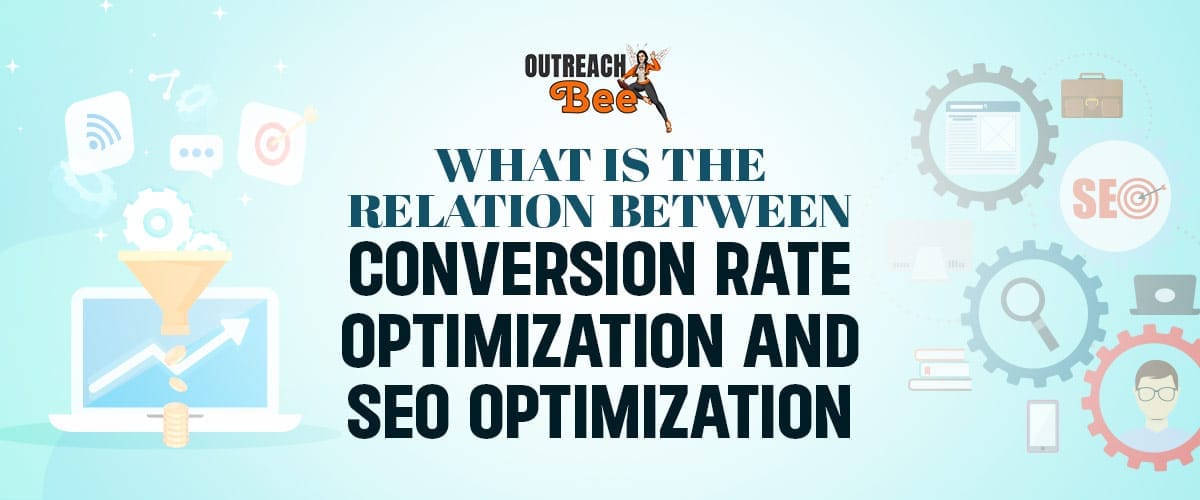Conversion Rate
Conversion rate – the percentage of users or visitors who complete a desired action on a given website or business – is ultimately how the success of a SEO campaign translates into tangible benefits for a client or a business.
Conversion rate optimization (CRO) VS Search Engine Optimization (SEO)
Therefore, conversion rate optimization (abbreviated as CRO) is only the natural step after SEO optimization. CRO is how you drive the traffic you’re getting from SEO toward the final goals that have been set for the website.
Popular conversion examples include: completing a purchase, subscribing to a service, signing up for an account or a newsletter; or even adding a product to the shopping cart.
Why is Conversion Rate Optimization important for SEO?
- SEO is about bringing more people to you, but CRO is about making them stay with you.
- CRO will provide more insight regarding your potential clients / users’ behavior.
- Conversion Rate Optimization is what turns browsers into buyers.
Ways to improve Conversion Rate Optimization
1. Understanding user profile
The first step is to read people. There are free tools such as Google Analytics to analyze website statistics and to find answers to questions like user demographics (age, country, profile) or top devices / browsers used by the audience (this is essential to improve their experience).
2. Understanding user behavior
Other questions to answer are more behavioral: What is the first page or URL people land on the site? Where do they spend the most time? (This will reveal which part of a website is the most engaging) Which channels / referrers are directing users to the site? What is the most common exit page? (the last page they visit when they decide to leave).
Some websites use tools for ‘session recording’ as a way to see clearly how users are interacting with a website. As the name suggests, these tools record actions taken by a user during a session (clicks, taps, scrolling, etc).
3. Asking for feedback
This is a key part of CRO. You can create surveys, for example, to kindly ask customers about their experience on the website.
Feedback, as well as the statistics mentioned above, will help make better decisions; instead of acting on a hunch or because “someone else is doing it”.
4. Improving the landing page
Sometimes we forget the importance of landing pages and how dramatic their influence is on conversion rates.
Analyzing, testing and re-testing landing pages is a key part of CRO. Colors, design, layout, content. How engaging is the headline? How easy to understand is the copy? How well-placed are the buttons?
Especially if you’re running ads, it’s important that the landing page delivers the “promise” of your call-to-action. Remember what brought people to a page in the first place and make it easy for them to find what they’re looking for.
5. Technical performance and user experience
Check the website for technical optimization opportunities. The experience that users have while navigating a site will influence the conversion rate more than one would think. Run tests to assess any possible issue, mobile optimization, site speed, etc.
The goal here is to minimize any effort required by users and eliminate any possible obstacles they encounter while trying to make a conversion on the site. Their experience should be easy and smooth.
6. Long-tail keywords
While campaign managers will focus on keywords that bring the most traffic to a website, CRO will find keywords that are more specific and might bring a smaller audience, but a more relevant audience as well.
These are called long-tail keywords and they offer 2.5 times the conversion rate of short keywords.
7. Make users stay or come back
Pop-ups and subscription boxes, designed to turn users into subscribers (newsletters, accounts), are also important tools for conversion rate. These actions may not generate revenue by themselves, but they definitely bring the user closer to a purchase and integrate them into a community.
8. Split testing
A more technical method, split testing, also known as A/B testing, is often used as a tool for Conversion Rate Optimization.
The technique consists of having two versions of a website running at the same time for two different groups of visitors. The version that gets more conversions is obviously the one to go for.
Split testing only works on websites with enough traffic to yield reliable results.
Conclusion on Conversion Rate Optimization and SEO optimization
Conversion Rate Optimization and SEO optimization go hand in hand when it comes to website performance. Keywords are important, yes, but keywords alone won’t turn users into sales by themselves: for that you need Conversion Rate Optimization.



What is a DNS, and Why Do You Need One?
In Need of a Good VPN? Here is a List Based on Reliability, Speed, and Security